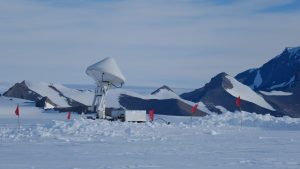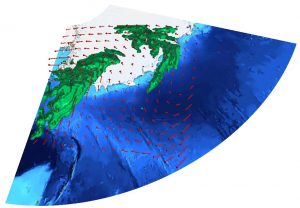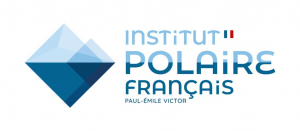
Radar deployed at Princess Elizabeth station, Antarctica
Precipitation is the main input of water to the Antarctic ice sheet and its evolution in the figure may significantly mitigate or amplify the sea level rise. The snow accumulation on the ice sheet can be estimated from networks of glaciological stakes and ice cores for instance, but the amount of precipitation that falls in Antarctica and how it will evolve in the future remains an open and challenging question.
One major research topic at LTE is the study of the Antarctic precipitation. More specifically, our work focuses on two research lines:
Measurements of dynamical and microphysical processes that drive the formation, growth and evolution of the Antarctic precipitation
For this purpose, we combine analyses of the synoptic dynamics from atmospheric model output and reanalyses with studies of remotely-sensed and ground-level measurements from instruments – in particular radars – that we deploy on the field. The acquisition, processing, analysis and interpretation of radar data in the harsh Antarctic climate is a key aspect of our work. Aside from precipitation, we also investigate the dynamics of the so-called ‘katabatic winds’ that blow near-the surface of the Antarctic continent and that considerably diminish the surface precipitation by ‘evaporating’ the snowflakes before they reach the ground.
The representation of Antarctic clouds and precipitation in atmospheric models
The uncertainties and biases of current climate models regarding the precipitation and the cloud radiative effect over Antarctica seriously question the reliability of the climate scenarios in Antarctica. It is hence vital to assess and improve the parameterization of clouds and precipitation in atmospheric models. We thus use remotely-sensed measurements to evaluate and develop model parameterizations – particularly microphysical parameterizations – that are adapted to the Antarctic conditions. The development of methodologies to properly compare radar observations with model simulations is also an important part of our work.

Researchers: Josué Gehring, Alfonso Ferrone, Étienne Vignon, Alexis Berne
Partners

